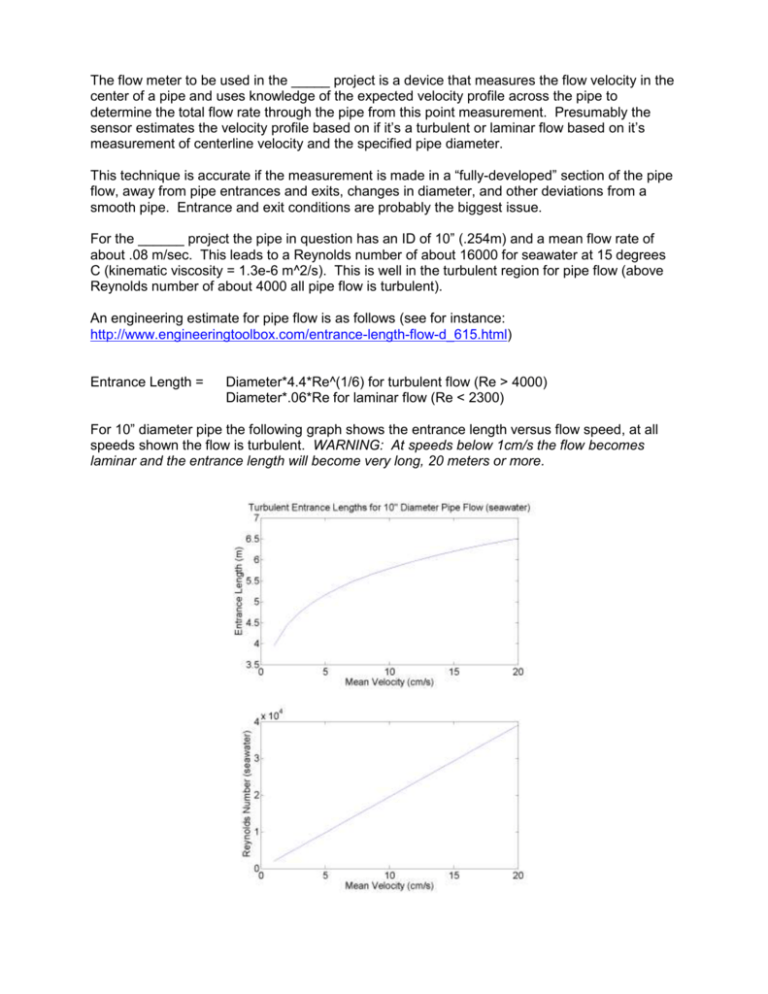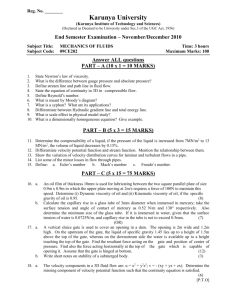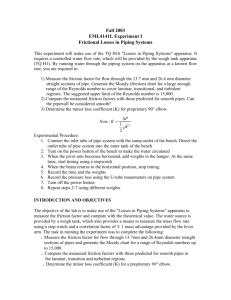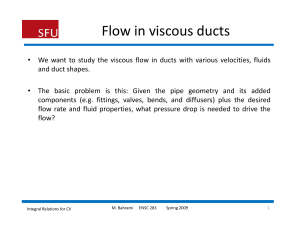EntranceLengthEstimates
advertisement

The flow meter to be used in the _____ project is a device that measures the flow velocity in the center of a pipe and uses knowledge of the expected velocity profile across the pipe to determine the total flow rate through the pipe from this point measurement. Presumably the sensor estimates the velocity profile based on if it’s a turbulent or laminar flow based on it’s measurement of centerline velocity and the specified pipe diameter. This technique is accurate if the measurement is made in a “fully-developed” section of the pipe flow, away from pipe entrances and exits, changes in diameter, and other deviations from a smooth pipe. Entrance and exit conditions are probably the biggest issue. For the ______ project the pipe in question has an ID of 10” (.254m) and a mean flow rate of about .08 m/sec. This leads to a Reynolds number of about 16000 for seawater at 15 degrees C (kinematic viscosity = 1.3e-6 m^2/s). This is well in the turbulent region for pipe flow (above Reynolds number of about 4000 all pipe flow is turbulent). An engineering estimate for pipe flow is as follows (see for instance: http://www.engineeringtoolbox.com/entrance-length-flow-d_615.html) Entrance Length = Diameter*4.4*Re^(1/6) for turbulent flow (Re > 4000) Diameter*.06*Re for laminar flow (Re < 2300) For 10” diameter pipe the following graph shows the entrance length versus flow speed, at all speeds shown the flow is turbulent. WARNING: At speeds below 1cm/s the flow becomes laminar and the entrance length will become very long, 20 meters or more.











